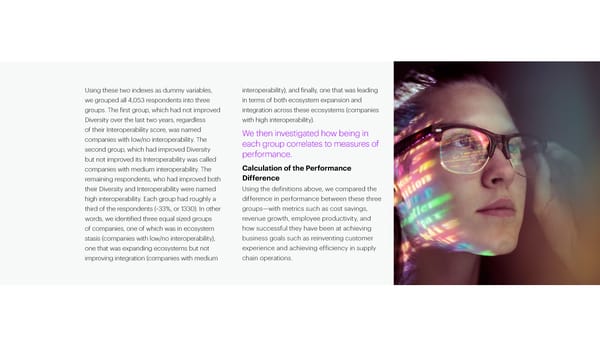Using these two indexes as dummy variables, interoperability), and finally, one that was leading we grouped all 4,053 respondents into three in terms of both ecosystem expansion and groups. The first group, which had not improved integration across these ecosystems (companies Diversity over the last two years, regardless with high interoperability). of their Interoperability score, was named We then investigated how being in companies with low/no interoperability. The each group correlates to measures of second group, which had improved Diversity performance. but not improved its Interoperability was called companies with medium interoperability. The Calculation of the Performance remaining respondents, who had improved both Difference their Diversity and Interoperability were named Using the definitions above, we compared the high interoperability. Each group had roughly a difference in performance between these three third of the respondents (~33%, or 1330). In other groups—with metrics such as cost savings, words, we identified three equal sized groups revenue growth, employee productivity, and of companies, one of which was in ecosystem how successful they have been at achieving stasis (companies with low/no interoperability), business goals such as reinventing customer one that was expanding ecosystems but not experience and achieving efficiency in supply improving integration (companies with medium chain operations.
 Full Report Page 40 Page 42
Full Report Page 40 Page 42